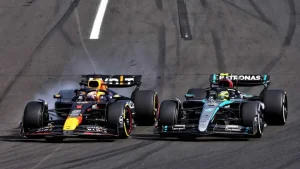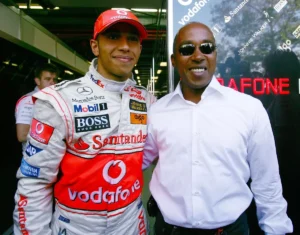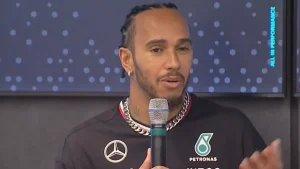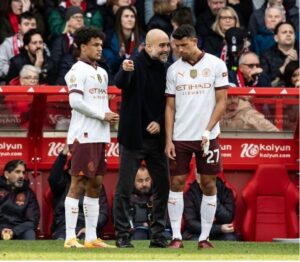
Following a collision between Max Verstappen and Lewis Hamilton during the Hungarian Grand Prix’s Turn 1, the FIA decided not to take any further measures.
The drivers of Mercedes and Red Bull also filed a report with the stewards over Verstappen’s suspected violation of the International Sporting Code, which pertains to intentionally causing an accident.
During the Hungarian Grand Prix, Verstappen was pursuing Hamilton for the final podium spot, but the Mercedes driver blocked his way, allowing him to hold onto his 200th career podium finish at the finish line.
At Turn 1, however, Verstappen attempted to pass him and locked both of his front wheels. This caused his back tire to collide with Hamilton’s front, sending the Red Bull into the air before it made a rough landing.
Though he managed to continue, Verstappen eventually crossed the finish line in fifth place, capping a challenging afternoon for the defending world champion. He eventually lost ground to Charles Leclerc’s Ferrari.
Verstappen thought the Mercedes driver moved under braking to protect his position, but the stewards concluded that Hamilton had stated there was a racing incident involving the two cars.
“On the approach to turn 1, both Car 44 and Car 1 overtook Car 23,” the stewards wrote. Before the braking zone, car 44 made its way back to the starting line and started to turn into turn 1.
Because of DRS, Car 1 entered the turn more quickly than in previous laps and applied the brakes at the same spot.
Car 1’s driver contended that Car 44 was veering out of control when braking. Car 44’s driver said he was only following his standard racing line, and this was verified by looking at data and video footage from earlier laps.
Prior to any incident, it was evident that Car 1 had locked up both front wheels on the approach to Turn 1, but it had missed the customary turning line for an overtaking manoeuvre.
“The driver of Car 44 may have done more to avoid the collision, but the Stewards do not believe this to be a typical case of “changing direction under braking.”
“Therefore, we conclude that none of the drivers were primarily at fault and choose not to pursue any additional measures.”






